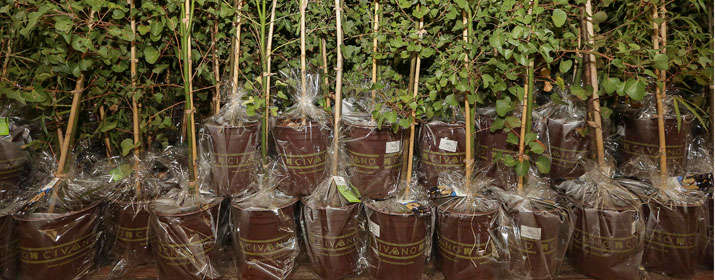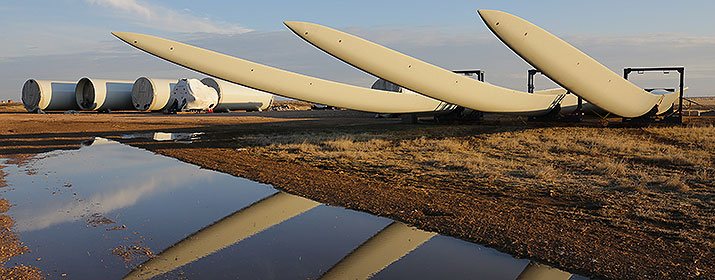
Planting trees around your home can provide relief from the sweltering sun in the summer, beautify your home and attract birds and wildlife. But before you order a tree through our Trees for You program, there are several things you should consider to select just the right variety for your needs.
Stephanie Vickers, Certified Nursery Professional and Wholesale Sales Manager for Civano Nursery, has helped thousands of customers with their landscaping plans.
“The tendency is to buy trees based on how they look, but there’s so much more to think about,” she said. “They need to consider their goals, where it could be planted, its care and maintenance and what it will look like in 10 years when it’s mature.”
Because it’s hard to envision what this small potted tree might eventually become, Vickers says start by thinking about what you hope to accomplish by planting the tree. Some common goals include creating shade to reduce cooling costs, blocking wind, creating privacy or luring pollinators to your yard.
Once you’re clear on your goal, Vickers offers these important considerations to ensure you select the perfect tree for your home.
Placement
Start by walking around your home to look for an ideal space for your tree. Avoid areas where the tree could interfere with power lines, chimneys, eaves or porch overhangs or block your enjoyable mountain view.
Visualize what your tree might look like once it matures, including the height and width of the canopy and size of the root system. According to the University of Arizona’s Cooperative Extension, roots of mature trees can extend up to 4 times the width of their canopy.
“Make sure the tree is adequately placed away from your foundation, driveway and walkways. The tree’s roots could damage these over time,” Vickers added. “But most native desert-adapted trees, such as mesquite, don’t have aggressive root systems.”
TEP requires that trees purchased through our program are planted within 15 feet of the west, south and east sides of the home, and at least 10 feet from sewer lines, 5 feet from water lines and 3 feet from other utility lines. However, the northeast and northwest sides of your home also are acceptable. Always call Arizona 811 at 1-800-782-5348 at least two days before digging so that locations of underground lines can be marked.
Size and Shape
Once you’ve found the ideal spot, select a right-sized variety for the space you have available. “Smaller, narrower trees – such as shoestring acacia – work best for smaller yards, while larger yards can accommodate trees that grow very tall and wide, such as Arizona ash, chitalpa and sweet acacia,” Vickers said.
Annual or Deciduous
Another decision you’ll need to make is whether to select an annual or seasonal tree. Both offer energy efficiency benefits. Annual trees provide shade all year long but also can block the sun’s radiant heat from entering your home during cooler months.
Deciduous trees that lose their leaves in the fall, however, provide both summer shade and winter warmth by allowing the sun to warm your home, helping to reduce heating costs. Keep in mind you may need to rake or blow the leaves in the fall if you prefer a tidy yard.
Fruit and Flowering Trees
Those who want to attract birds to their backyard and add color to their landscape might choose a tree that bears flowers, fruit or berries. Good choices include pomegranate, desert willow and desert hackberry.
“Pomegranates attract birds as does the desert hackberry, which produces juicy red berries,” Vickers said. “Chitalpa trees, with their big tubular blooms, and the purple conical flowers of the chaste tree also attract birds and bees and they’re not that hard to maintain. Anything with a flower will attract these pollinators.”
Care and Maintenance
One final consideration is the amount of care and maintenance required for your tree to become established and thrive. Vickers says all young trees need regular watering at first and plenty of sunlight.
“If you’re a snowbird, planting a young tree in the spring just before you leave for the summer probably isn’t a good idea,” she said. “Native trees that tend to grow wild in the desert are the best choices for seasonal residents because they can get by with so little water.
Native mesquite, palo verde, ironwood and desert willow are all low maintenance, making them ideal for seasonal residents or those who travel frequently.
By doing a little homework before you buy a tree, you’ll select a variety that’s just right for you and your home.






